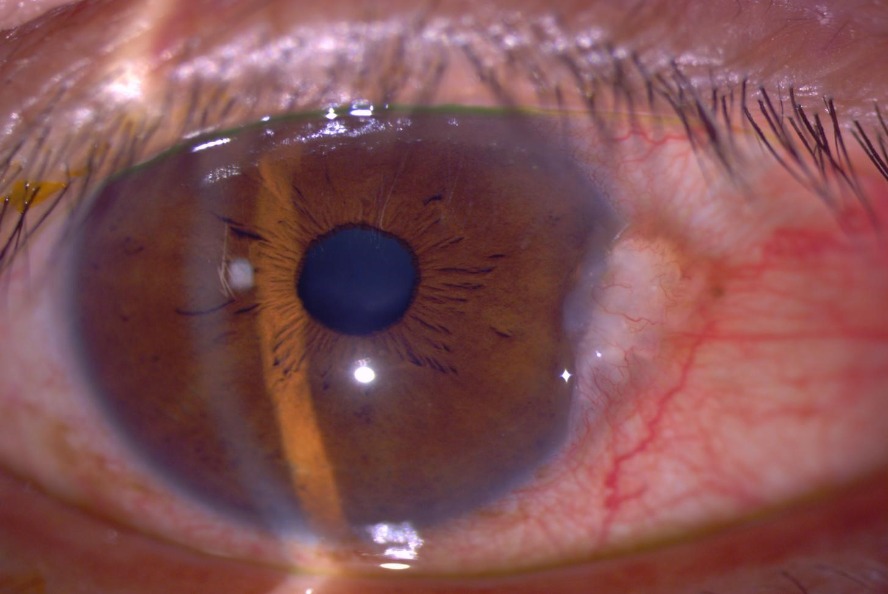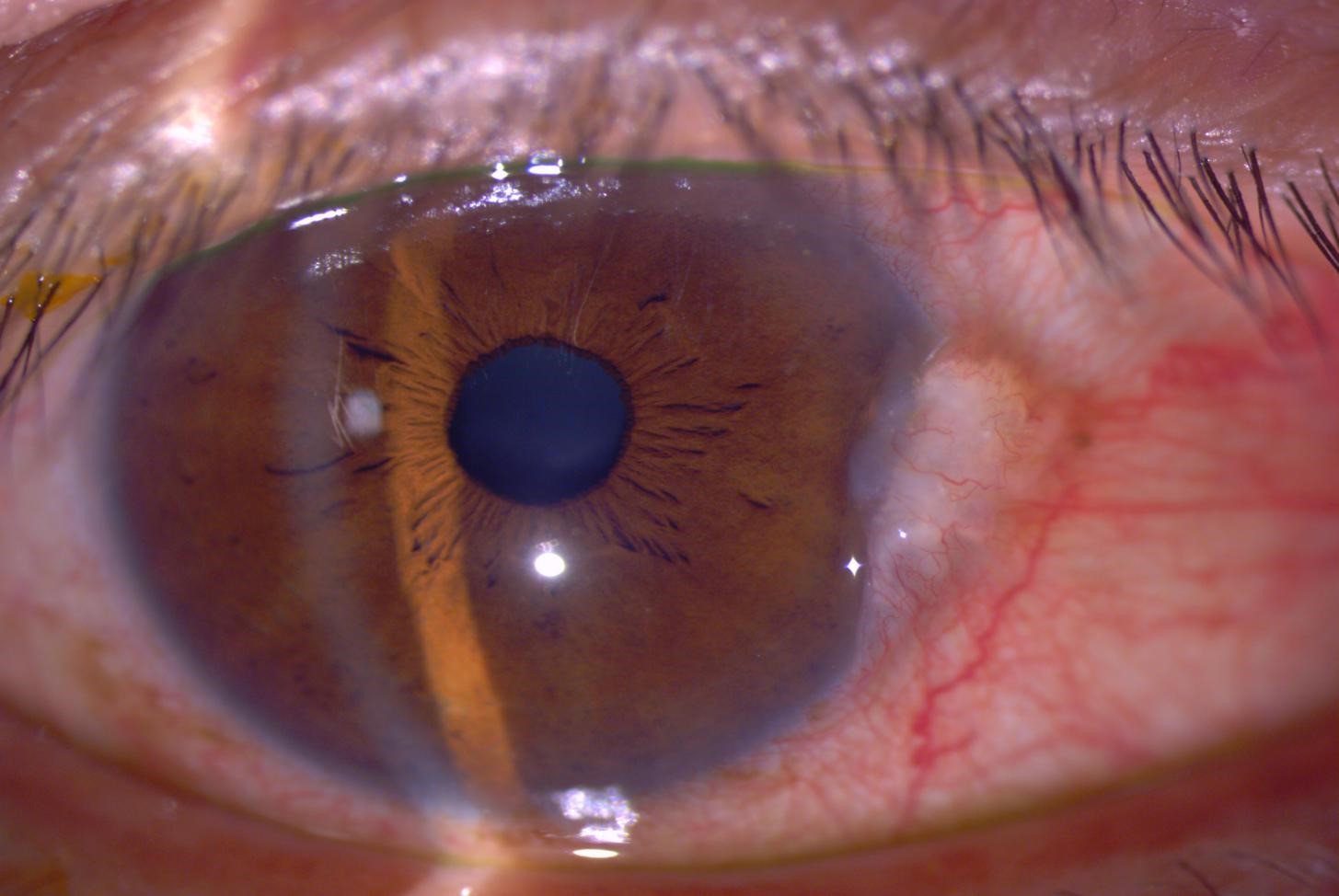
Pterygium
A pterygium is a fleshy, triangular or wing-shaped growth of the eye. It usually occurs on the inner corner of the eye but can also appear on the outer corner. It is a slow-growing and benign
Sometimes pterygium may grow over the cornea and cover the central cornea and affect vision.

Nodular pterygium growing at left side of photo
Pterygium - Symptoms
The signs and symptoms of a pterygium include:
- A whitish growth with prominent blood vessels on the clear part of the eye
- Redness over the affected area
- Eye irritation and foreign body sensation
- Dry eye symptoms
- Blurring of vision due to astigmatism or actually covering the central cornea.
Pterygium - Prevention
Wearing sunglasses with ultraviolet (UV) ray protection when outdoors or driving.
Pterygium - Causes and Risk Factors
The cause of pterygium is thought to be due to excessive exposure to sunlight and dry, dusty conditions also appear to play an important role.
Pterygium - Diagnosis
Diagnosis is made by clinical examination
Pterygium - Treatments
In early cases when there are no symptoms and the pterygium, it can be left alone and follow up. When the pterygium causes irritation, redness or discomfort, artificial tears can help moisturise the eye and relieve the discomfort.
When the pterygium affects vision, surgical removal is recommended. The surgery involves removing the fleshy growth and transplanting a translucent patch of conjunctiva over the surgical site, to reduce the risk of the pterygium growing back again (recurrence). This patch of conjunctiva is usually from one’s own eye (a conjunctival autograft), and the autograft can be secured with sutures or with use of fibrin glue (sutureless).
Complications of pterygium surgery are rare, but can include infection, scarring or thinning of the surgical site. The most common complication is recurrence. But the risk of pterygium recurrence following surgical removal and a conjunctival autograft is low and is the preferred surgical technique to remove them.
Disclaimer – Above are just general information and patients are advised to see their Eye Doctors for professional treatment.
